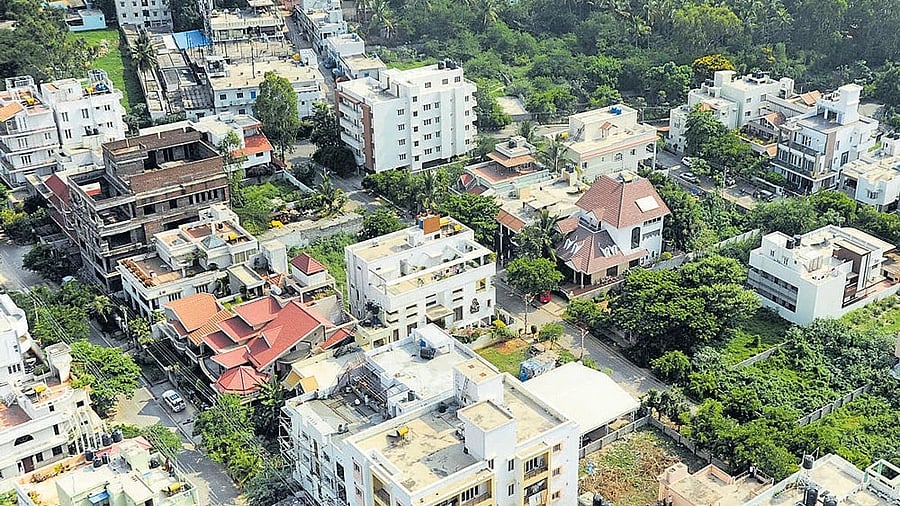
Representative image.
Bengaluru: Real estate sector and non-banking financial companies (NBFCs) are likely to witness 10.9% (10.5% actual salary increase in 2025) and 10% (9.8%) salary increase respectively in 2026- the highest increase compared to other sectors such as banking, and technology consulting & services, which will see the lowest salary increases next year at 8.6% and 6.8%, respectively.
Aon, a global professional services firm, projected in its study that salary increases are higher in growth-led and skill-scarce sectors. It stated that salaries in India are expected to increase by 9% in 2026, a slight rise from the actual 8.9% salary growth in 2025. This overall salary increase encompasses salary adjustments, performance-based increments, and other relevant factors.
Interestingly, this year's salary increase (2025) is among the lowest since 2010, but the impact on the real wage growth is lower because of easing inflation.
It said that India will sustain robust growth amid global headwinds and that two out of five companies are anticipating a top-line growth of over 10%.
“Among major world economies and leading Asian economies, India stands out with the highest salary increases," said Roopank Chaudhary, Partner and Rewards Consulting Leader, Talent Solutions for India at Aon.
The study also showed that overall attrition rates have declined to 17.1% in 2025, down from 17.7% in 2024 and 18.7% in 2023. This revealed that organisations are experiencing improved employee retention.
“Recent tax reforms are transforming India’s business landscape by incentivising demand and enabling domestic consumption, especially for consumer goods and automotive sectors,” said Amit Kumar Otwani, associate partner, Talent Solutions for India at Aon. “Simpler compliance and rationalised tax rates are boosting efficiency. Companies that align their rewards strategies with these changes will be best positioned to attract top talent," he added.
There is also minimal salary variation between management levels. While junior management is projected to receive a 9.5% salary increase in 2026 compared to the actual increase of 9.3% in 2025, top or senior-level management will receive the same 8.5% in 2026, too.
It pointed out trade and tech as emerging mega trends. While trade disruptions driven by geopolitical tensions and supply chain vulnerabilities demand a rethink of workforce and rewards strategies, rapid advances in Artificial Intelligence and automation are transforming job roles and skills, but at the same time introducing new vulnerabilities such as cybersecurity risks.
IT flexi staffing industry witnesses 5.5% increase sequentially
There is a strong revival in specialised technology demand as the IT flexi staffing industry recorded a 5.5% sequential growth in Q1FY2026 (April-June 2025). The Indian Staffing Federation (ISF), the apex industry body representing the manpower outsourcing sector, on Tuesday launched the Flexi Staffing Industry Employment Growth Report for Q1 FY2026.
It said the overall flexi staffing industry witnessed a QoQ growth at 1.5% (Q1 FY26 vs Q4 FY25). However, it dropped significantly on the YoY at a 6.1% growth rate. This growth trajectory is severely impacted due to global economic headwinds while sustaining through domestic digital transformation efforts, the ISF said.
The general flexi staffing segment witnessed a sequential growth of 1.4% in Q1 FY26. While demand from key sectors such as FMCG, E-commerce, Retail, Logistics, and Manufacturing continued to drive employment, the pace was tempered by a period of consolidation and delayed hiring decisions, the report added.
Manmeet Singh, Vice President, Indian Staffing Federation, said, “The IT staffing segment delivered robust performance, achieving a strong 5.5% QoQ increase. This momentum, marked by a 12.3% YoY growth, underscores the non-cyclical nature of digital transformation demands. Continued expansion of Global Capability Centres (GCCs) and significant investment in areas like AI, cloud computing, and digital services are the primary engines for this growth, ensuring the formal flexi workforce remains competitive in high-skill areas.”